Mercedes S-Class Automatic Parking is a sophisticated driver-assistance system that helps you park your luxury vehicle with ease. Our guide breaks down how this genius solution works, making parking simple and stress-free for every S-Class owner.
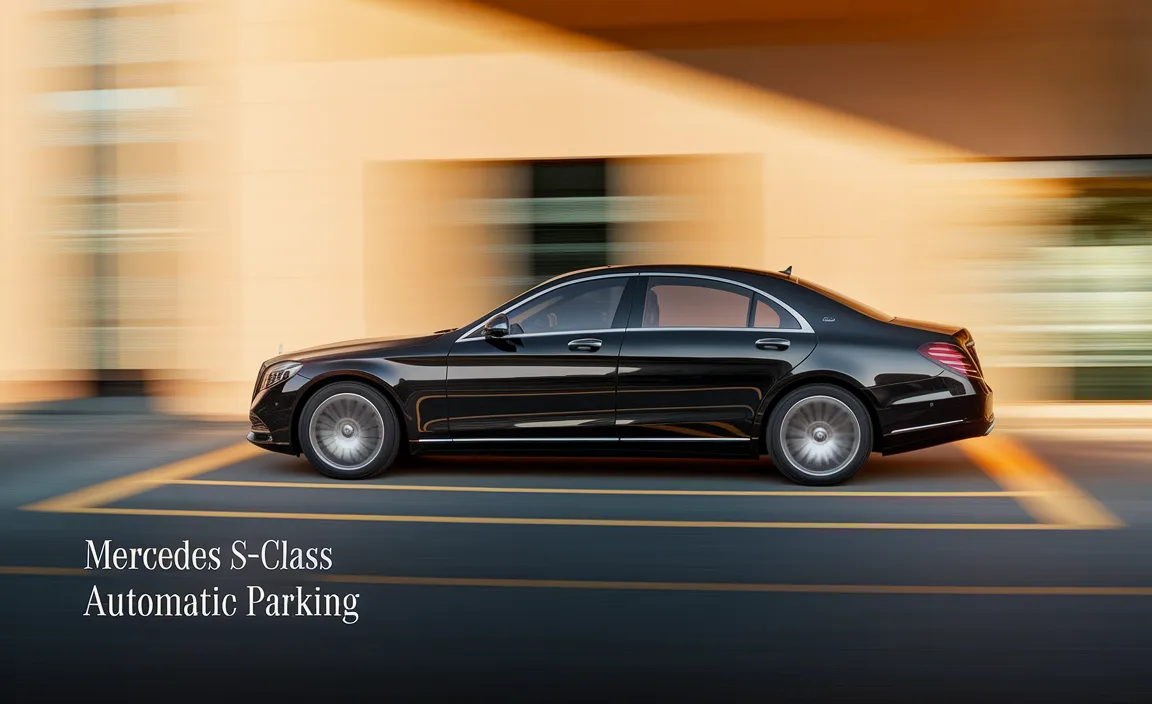
Parking, especially in tight city spots, can be a source of stress for many drivers. The fear of scuffing your pristine Mercedes-Benz S-Class is understandable. But what if your car could handle the tricky maneuvering for you? That’s where the remarkable Mercedes-Benz S-Class Automatic Parking system shines. It’s designed to take the guesswork and physical effort out of parking, transforming a dreaded task into a moment of effortless precision. We’re here to demystify this incredible technology, showing you how it works and how you can use it with confidence. Get ready to park like a pro, every single time. Let’s dive into this genius solution!
Understanding Mercedes S-Class Automatic Parking
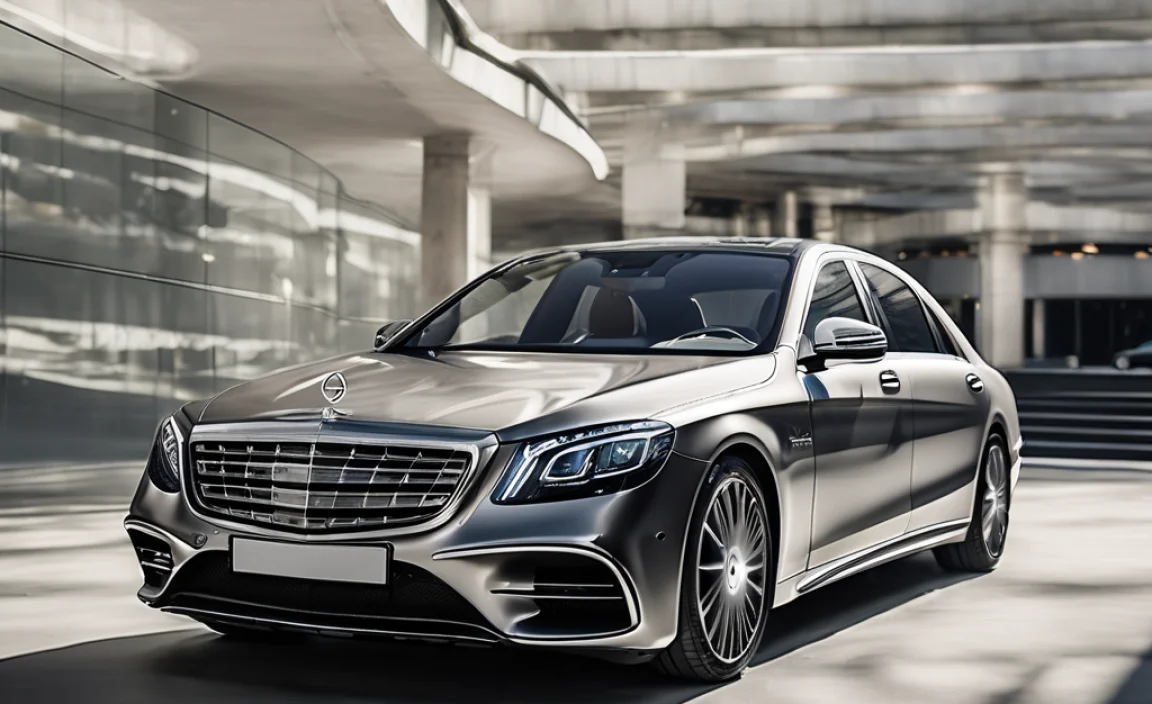
The Mercedes-Benz S-Class is renowned for its luxury, comfort, and cutting-edge technology. Among its most impressive innovations is the sophisticated automatic parking system, often referred to as PARKTRONIC with Active Parking Assist. This system isn’t just a parking sensor; it’s a fully integrated solution designed to guide your S-Class into parking spaces, both parallel and perpendicular, with minimal input from you. It leverages a suite of sensors and advanced software to detect suitable parking spots, measure them, and then control the steering, acceleration, braking, and gear changes to park the vehicle safely and accurately.
For beginners or even experienced drivers who face challenging parking situations, this feature can be a game-changer. It reduces the anxiety associated with parallel parking, tight garage spaces, or crowded parking lots. The system aims to make parking not just easier, but also safer, by providing precise control and constant monitoring of the vehicle’s surroundings. It’s a prime example of how Mercedes-Benz integrates intelligent technology to enhance the driving experience and offer unparalleled convenience.
How Does Automatic Parking Work? The Technology Behind the Magic
The magic behind the Mercedes S-Class automatic parking system lies in a combination of advanced sensors, cameras, and sophisticated software that work in unison. Think of it as your car having eyes all around and a brain that can calculate complex maneuvers in seconds. Here’s a breakdown of the key components involved:
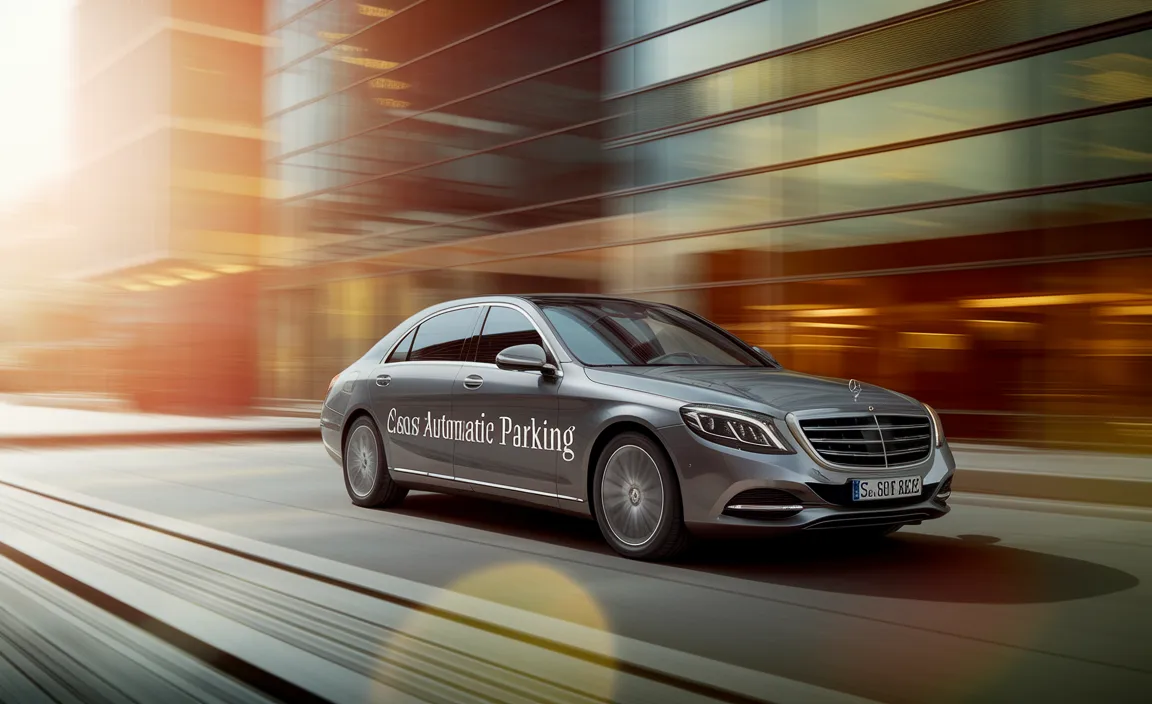
- Ultrasonic Sensors: These are small, unobtrusive sensors typically located in the front and rear bumpers (and sometimes on the sides) of your S-Class. They emit ultrasonic sound waves that bounce off surrounding objects – other cars, curbs, walls. By measuring the time it takes for the sound waves to return, the system can accurately determine the distance to these objects.
- Cameras: Various cameras, including those in the grille, side mirrors, and rear of the vehicle, provide a visual representation of the car’s surroundings. These cameras help the system identify parking lines, gauge the size of parking spaces, and detect any obstacles that might not be easily picked up by sensors alone. Some systems may even use 360-degree surround-view camera capabilities to enhance spatial awareness.
- Advanced Computer Systems and Algorithms: The data from the sensors and cameras is fed into a powerful onboard computer. This computer uses complex algorithms to process the information, identify a suitable parking space, calculate the optimal trajectory for entering the space, and control the car’s steering, throttle, and brakes.
- Electronic Power Steering: The system takes over the steering wheel to guide the car precisely into the parking spot.
- Brake and Throttle Control: The system manages acceleration and braking to control the car’s speed and ensure it stops at the correct points, preventing collisions.
- Transmission Control: For automatic transmission vehicles, the system can also select the appropriate gear (Drive or Reverse) to execute the parking maneuver.
Essentially, the car scans its environment, identifies a parking opportunity, communicates the dimensions of the space and potential hazards to the driver (often via the infotainment screen), and then, upon your command, executes the parking maneuver by taking control of the necessary driving functions. This intelligent integration of hardware and software is what makes the Mercedes-Benz PARKTRONIC with Active Parking Assist such a revolutionary feature.
Activating and Using Active Parking Assist: A Step-by-Step Guide
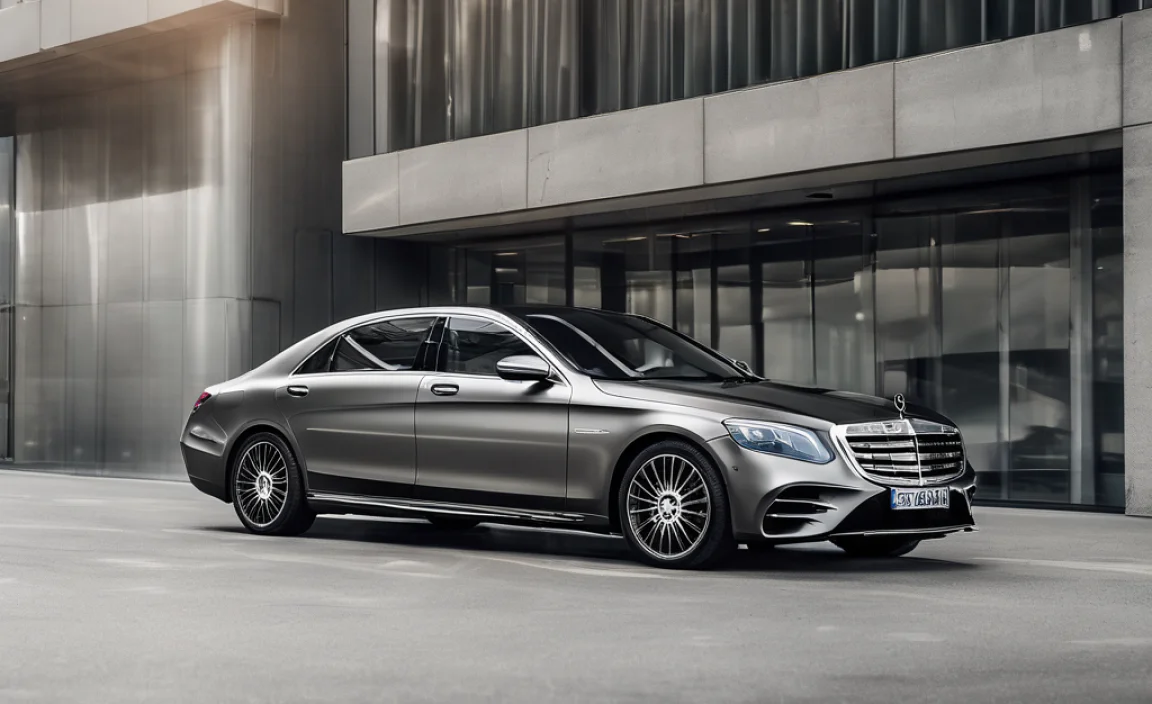
Using the Active Parking Assist in your Mercedes-Benz S-Class is designed to be intuitive. While the exact button placement and on-screen prompts might vary slightly depending on your S-Class model year and specific trim, the general process remains consistent. Here’s how you can activate and utilize this genius parking solution:
Step 1: Engage the System
The first step is to activate the parking assist function. You’ll typically find a button on the dashboard or center console with a steering wheel icon and a ‘P’ symbol. Pressing this button initializes the system, making your S-Class ready to search for parking spaces.
Locating the Button: Look for a button that visually represents parking assistance. It often has a steering wheel with a ‘P’ alongside it. This button is usually found in the cluster of buttons near the gear selector, on the center console, or sometimes integrated into the driver’s side dashboard.
Step 2: Select the Search Mode
Once activated, your S-Class will begin scouting for suitable parking spots as you drive past them. The system typically scans both sides of the road for parallel parking spaces and also looks for perpendicular parking spaces ahead of you.
- Driving Speed: It’s crucial to drive at a slow, steady pace (usually below 20 mph or 30 km/h) for the sensors and cameras to effectively detect and measure parking spaces.
- Indicator Usage: You can often help the system by activating your turn signal on the side where you wish to park. For example, if you want the system to find a spot on the right, engage your right turn signal. While not always mandatory, this can sometimes refine the search.
Your car’s instrument cluster or infotainment screen will display messages indicating that it is searching for a parking spot or has detected a suitable one. For instance, you might see “Searching for parking space…” or “Parking space found.”
Step 3: Confirm the Parking Space
When the system identifies a potential parking space that meets its criteria, it will alert you. The infotainment screen will display a visual representation of the identified space, including its dimensions relative to your vehicle. It will usually prompt you to decide if you want to use this space.
Visual Confirmation: The display will show the car and highlight the parking spot. It will often indicate whether the spot is suitable for parallel or perpendicular parking and provide an estimate of the space’s length and width. Pay attention to this visual confirmation.
Driver Intervention: You’ll typically need to confirm that you want to proceed with the parking maneuver. This might involve pressing the parking assist button again, selecting “Park” on the infotainment screen, or confirming via a steering wheel button.
Step 4: Follow On-Screen Instructions to Manoeuvre into the Space
Once you confirm the chosen spot, the system takes over the steering. You will then be guided by clear instructions on the display to control the vehicle’s speed and gear selection.
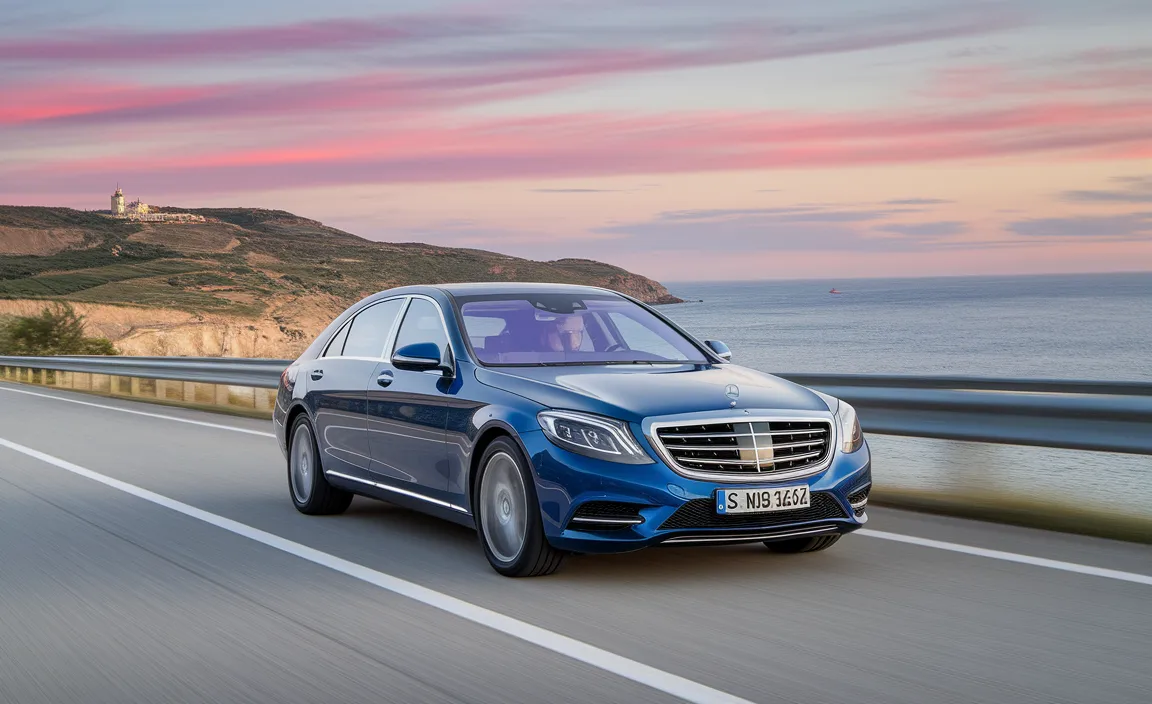
Steering is Assisted: The system will automatically turn the steering wheel to guide your S-Class into the parking space. You should keep your hands lightly on the steering wheel for safety and to feel the system’s actions, but you do not need to turn it yourself.
Driver Controls Acceleration, Braking, and Gears: Your role now is to manage the pedals and gear shifter. The system will prompt you when to shift gears (e.g., “Select Reverse,” “Select Drive”) and will monitor your speed. The display will show your current gear and a prompt for the next required action. For example, it might say “Drive forward slowly” or “Reverse slowly.” You are responsible for applying the accelerator and brakes to control the vehicle’s speed according to these instructions.
Constant Monitoring: While the system is active, it continuously uses its sensors to detect obstacles. If it senses a potential collision, it will automatically apply the brakes. However, it is always recommended to remain vigilant, especially in busy areas.
Step 5: Completing the Maneuver
Continue to follow the on-screen prompts, controlling the accelerator and brake, and shifting gears as directed. The system will guide the car until it is safely and precisely positioned within the parking space. Once the maneuver is complete, the system will alert you that parking is finished and hand back full control of the vehicle.
Completion Notification: You’ll typically receive a message on your display like “Parking maneuver completed” or similar. The steering wheel will stop moving, and the system will disengage.
Final Check: Even after the system indicates completion, it’s always a good practice to visually check your car’s position and ensure you are centered within the parking bay and clear of any surrounding vehicles or obstacles. You may need to make minor adjustments manually.
Types of Parking Supported by Active Parking Assist
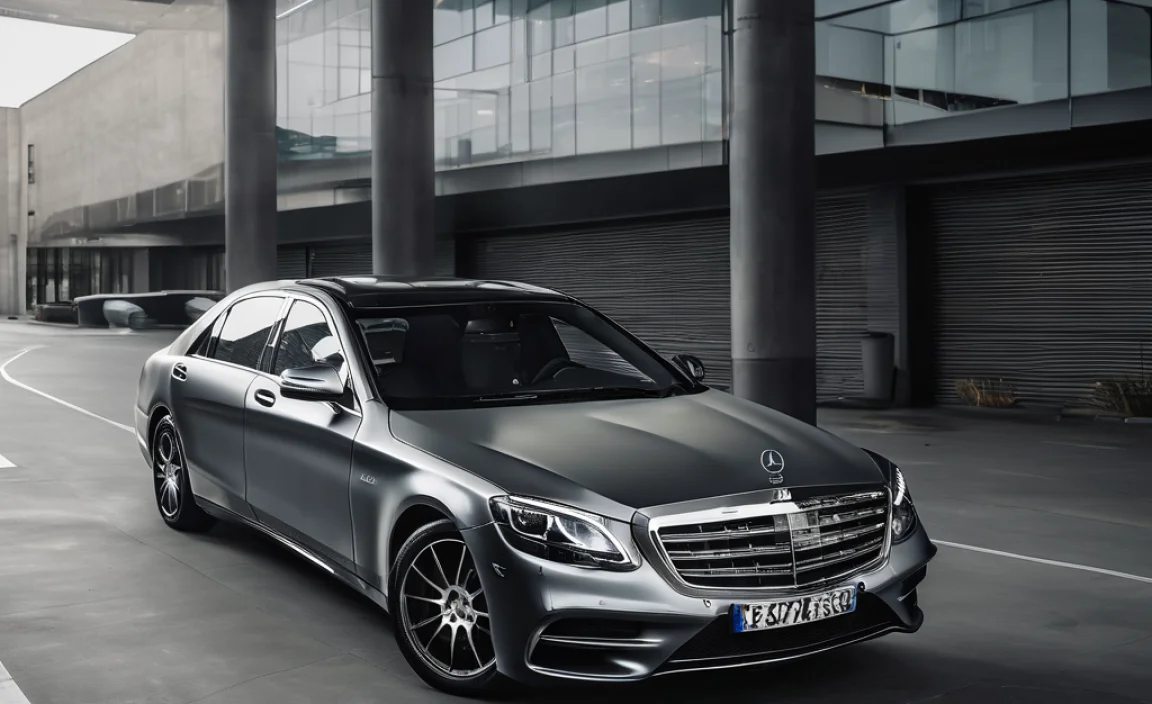
Mercedes-Benz’s sophisticated Active Parking Assist system is designed to handle the most common and often most challenging parking scenarios, making it an indispensable tool for any S-Class owner. It significantly reduces the complexity and stress associated with fitting your luxury sedan into various types of parking spaces. The system is engineered to be versatile, offering assistance in both parallel and perpendicular parking situations.
Parallel Parking
This is arguably the most dreaded parking maneuver for many drivers. The Active Parking Assist excels in this area, capable of finding and maneuvering into parallel parking spots along the side of the road. The system can handle parking both on the left and right sides of the street. It will identify a space that is sufficiently long for your S-Class, calculate the precise angle of entry, and execute the intricate steering, acceleration, and braking required to position your car perfectly between two other vehicles.
Process: As you drive slowly past a row of parked cars, the system scans the spaces. If a suitable gap is found, it will alert you. You then confirm the spot, and the system takes over the steering while you manage the pedals and gear changes based on the on-screen prompts. It will guide you into the space, automatically adjusting its steering to navigate the tight confines.
Perpendicular Parking
The Active Parking Assist also simplifies perpendicular parking, where the car is positioned at a 90-degree angle to the curb or parking aisle. This is common in supermarket parking lots, multi-story garages, and residential areas. Whether it’s a space between two other cars or an end-in spot, the system can guide your S-Class into it.
Process: When driving past potential perpendicular spaces, the system will identify an available spot. It will typically indicate whether it can park the car nose-in or reverse-in, depending on the configuration and system capabilities. After your confirmation, the system steers the vehicle into the space, using its sensors and cameras to maintain a safe distance from surrounding vehicles and the lines of the parking bay. Again, you’ll be responsible for controlling the acceleration and braking, following the on-screen instructions.
Parking in Garages and Driveways
In addition to standard street parking, the Active Parking Assist can also be used to park your S-Class within garages or driveways. The system’s ability to perform precise, controlled movements makes it ideal for navigating confined spaces, ensuring you don’t damage your vehicle or the garage structure. It can help you maneuver into tight garage bays or position your car correctly in a driveway.
Considerations: While highly capable, the effectiveness in a typical residential garage might depend on the width of the garage door opening and the internal space. Always ensure there is adequate clearance before initiating the maneuver, and remain ready to take manual control if necessary. The system’s sensors are excellent but relying on them solely in extremely tight or cluttered environments means understanding their limitations.
The versatility of the Active Parking Assist across these different parking scenarios underscores its value as a true “genius solution” for effortless parking.
PARKTRONIC vs. Active Parking Assist: What’s the Difference?
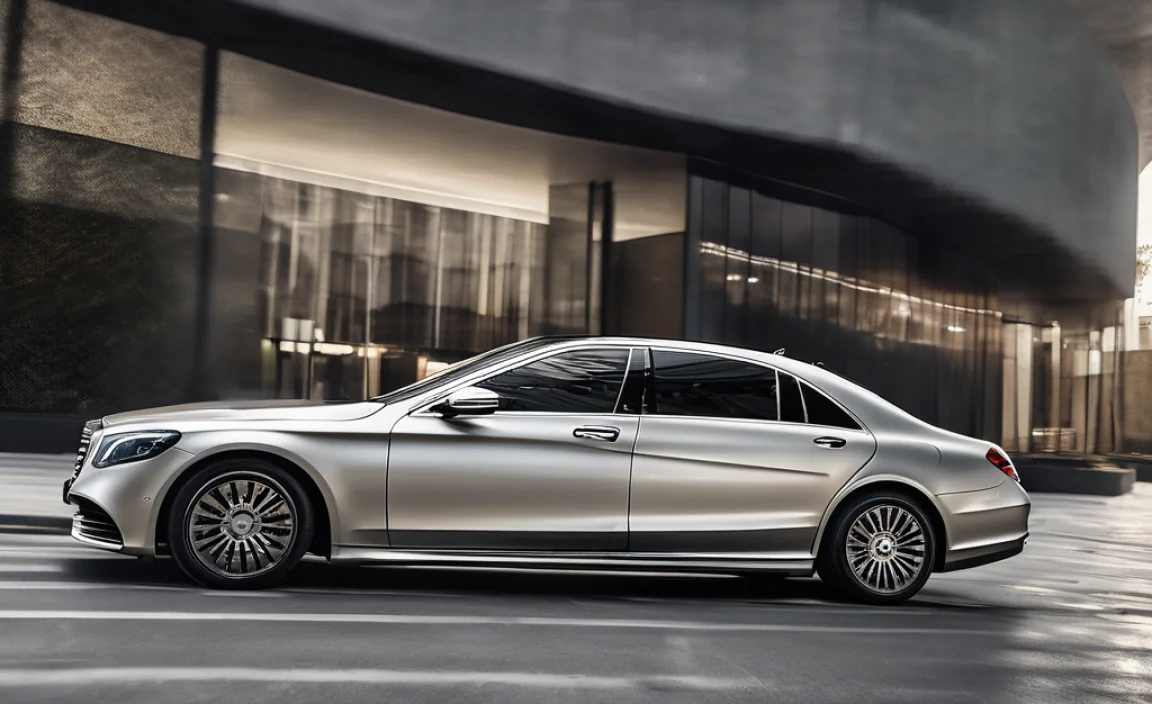
It’s common for Mercedes-Benz owners to encounter terms like PARKTRONIC and Active Parking Assist. While both are related to parking assistance, they represent different levels of functionality. Understanding this distinction is key to appreciating the full capabilities of your S-Class’s parking systems.
PARKTRONIC System
The PARKTRONIC system is the foundational parking sensor technology. Its primary function is to alert the driver to the presence of obstacles around the vehicle while parking. It uses the same ultrasonic sensors mentioned earlier to detect objects.
- Auditory and Visual Warnings: When you are driving at low speeds and the sensors detect an object, PARKTRONIC will provide warnings. These typically consist of audible beeps that increase in frequency as you get closer to the object, and visual indicators on the instrument cluster or infotainment screen, often depicted as bars that fill up.
- Distance Indication: The system indicates the distance to the nearest obstacle in front or behind the car. For example, it might show “30 cm” or “10 cm” to warn you how close you are.
- No Steering or Throttle Control: Crucially, PARKTRONIC does not steer the vehicle, control the accelerator, or apply the brakes. It is purely a warning system designed to help the driver avoid collisions by providing proximity information. You are in full control of the steering, braking, and acceleration.
Think of PARKTRONIC as your car’s sophisticated audible and visual parking guide. It’s an essential safety feature that helps you gauge distances accurately.
Active Parking Assist
Active Parking Assist, often referred to as PARKTRONIC with Active Parking Assist, builds entirely upon the PARKTRONIC foundation. It incorporates all the warning capabilities of PARKTRONIC but adds the significant functionality of automated steering and, in newer systems, automated acceleration and braking.
- Automated Steering: This is the hallmark of Active Parking Assist. The system can automatically steer the vehicle into a selected parking space without the driver needing to turn the steering wheel.
- Automated Acceleration and Braking (on applicable models): In many newer S-Class models equipped with Active Parking Assist, the system can also manage the vehicle’s speed by controlling the accelerator and brakes. The driver still needs to select gears and can override the system at any time by touching the brake or accelerator.
- Full Parking Maneuver Assistance: It can guide the car through the entire parking process, from identifying a suitable space to positioning the car within it.
- Driver Oversight Required: While the system performs the complex maneuvers, the driver remains responsible for supervising the process, selecting the correct gear, and controlling the vehicle’s speed via the pedals, and is expected to intervene if necessary.
In essence, PARKTRONIC is the watchful eye and ear, while Active Parking Assist is the intelligent brain and guiding hand that can perform the actual parking maneuver with your supervision and control over speed. For the S-Class owner seeking effortless parking, Active Parking Assist is the standout “genius solution.”
Benefits and Drawbacks of Automatic Parking
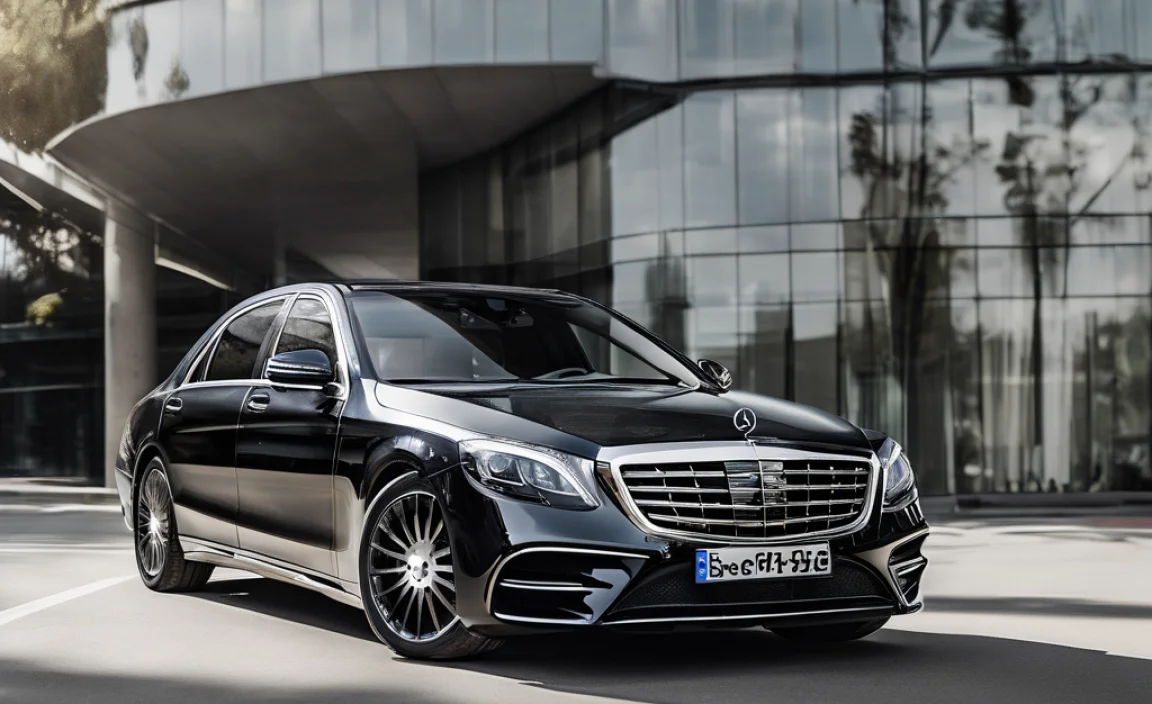
The automatic parking system in the Mercedes-Benz S-Class is undeniably innovative and convenient. However, like any advanced technology, it comes with its own set of advantages and potential limitations. Understanding these can help you use the system most effectively and know when it’s best to rely on your own driving skills.
Benefits
- Reduced Stress and Anxiety: For many, parking is a stressful part of driving. Automatic parking removes much of this anxiety, especially in tight or difficult spots.
- Enhanced Precision and Safety: The system uses precise calculations and sensors to position the car perfectly, potentially reducing the risk of minor bumps, scrapes, or curb damage that can occur with manual parking.
- Convenience and Time-Saving: It simplifies the parking process, often allowing you to park more quickly and with less physical effort, especially in complex parallel parking situations.
- Improved Spatial Awareness: The system’s sensors and cameras provide a comprehensive view of the car’s surroundings, which can be beneficial even for experienced drivers.
- Accessibility for New Drivers: For those new to driving or less confident with maneuvering in tight spaces, this feature can significantly boost confidence and independence.
- Parking in Difficult Spots: It can make parking in notoriously tight city spots or complex multi-story car parks much more manageable.
Drawbacks
- Reliance on Sensor/Camera Functionality: The system relies heavily on clean and unobstructed sensors and cameras. Mud, snow, ice, or damage can impair their performance.
- Less Effective in Complex/Challenging Environments: While advanced, the system might struggle in poorly lit conditions, areas with unclear markings, or extremely cluttered parking lots where its sensors might be confused by unusual obstacles.
- Driver Responsibility Remains: It’s crucial to remember that the driver is still ultimately responsible for the vehicle. The system requires supervision and the ability to intervene at any moment. Over-reliance without vigilance can lead to accidents.
- Learning Curve: Although designed to be intuitive, there is a slight learning curve to understanding the on-screen prompts and knowing exactly when and how to control the pedals.
- Potential for Slower Maneuvers: In some cases, the automated system might be slower to complete a parking maneuver than an experienced driver, especially if it has to pause frequently for sensor readings.
- System Malfunctions: As with any complex electronic system, there is always a small possibility of a software glitch or hardware malfunction, although Mercedes-Benz systems are generally very reliable. Regular maintenance and software updates are important.
- Cost of Repair: If components of the parking assist system (sensors, cameras, control modules) require repair, they can be costly to replace, reflecting the advanced nature of the technology.
Despite the drawbacks, the overarching consensus is that automatic parking systems like the one in the S-Class offer significant advantages that enhance the ownership experience. By understanding both the benefits and limitations, owners can leverage this technology to its fullest potential.
Maintaining Your Automatic Parking System
Just like any sophisticated electronic system in your S-Class, the automatic parking features require a little attention to ensure they continue to operate flawlessly. Keeping these components in good condition will guarantee that your “genius solution” remains reliable and effective for years to come.
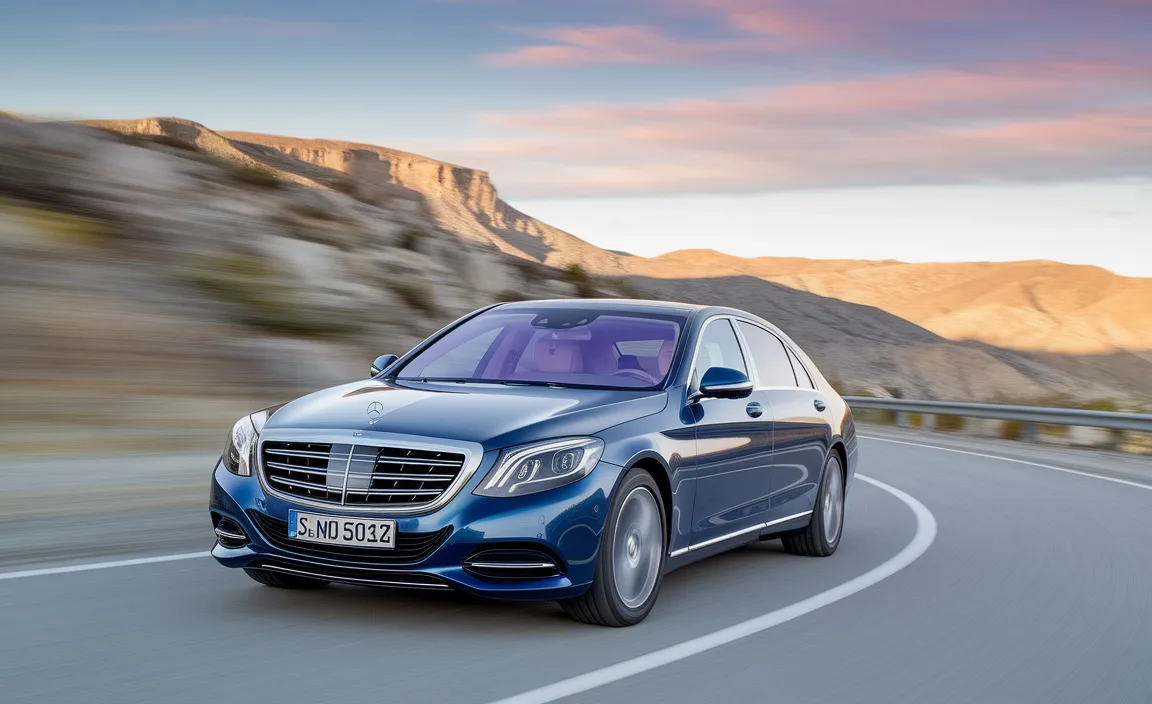
Keeping Sensors and Cameras Clean
This is the most straightforward and critical aspect of maintaining your parking assist system. The ultrasonic sensors, typically located in the front and rear bumpers, and the various cameras (front grille, side mirrors, rear) need to be free of dirt, mud, snow, ice, and any other obstructions.
- Regular Cleaning: When washing your car, pay special attention to cleaning the bumpers and around the mirrors where these components are housed. Use a soft cloth and mild car wash soap. Avoid using abrasive materials or high-pressure washers directly on sensors, as this could cause damage.
- Wiper Blades: For cameras mounted behind the windshield or in the grille, ensure wiper blades are in good condition. Some advanced systems may have small washer jets for cameras; ensure these are functional and topped up with washer fluid.
- Check for Damage: Periodically inspect the sensors and camera housings for any visible cracks or damage. Even minor damage can affect their performance.
The car’s infotainment system will often notify you if a sensor or camera is obstructed or malfunctioning, usually with a specific warning message on the dashboard or display. Heed these warnings promptly.
Software Updates
Like the infotainment system and engine control unit, the software that governs the automatic parking system is regularly updated by Mercedes-Benz. These updates can introduce improvements, fix bugs, and enhance the system’s performance and compatibility with new vehicle features.
- Dealership Visits: Most software updates are performed during scheduled service appointments at an authorized Mercedes-Benz dealership. Ensure your service advisor is aware of any issues you might be experiencing with the parking assist system.
- Over-the-Air (OTA) Updates: Some newer Mercedes-Benz models are capable of receiving over-the-air updates for certain control units. Check your vehicle’s settings or your Mercedes me portal to see if your S-Class supports such updates for its driving assistance systems.
Regular Servicing
During routine maintenance checks at your dealership, the parking assistance systems are part of the overall vehicle inspection. Technicians will check for fault codes, verify sensor alignment (if applicable), and ensure all components are functioning as intended.
- Diagnostic Scans: Technicians use specialized diagnostic tools to communicate with all the car’s electronic modules, including the parking assist control unit. This helps identify any underlying issues before they become significant problems.
- Component Checks: They will visually inspect components for wear and tear and ensure electrical connections are secure.
Refer to your owner’s manual for the recommended service intervals for your specific S-Class model. Adhering to these schedules is the best way to ensure all your vehicle’s advanced systems, including the genius automatic parking solution, remain in peak condition.
External Resources for Parking System Information
Understanding the technology in your Mercedes-Benz S-Class can be a journey, and sometimes, referring to official sources or reputable third-party information providers is invaluable. Here are some external resources that can offer further insight into parking systems and automotive technology:
- National Highway Traffic Safety Administration (NHTSA): As a United States government agency, NHTSA provides comprehensive safety information about vehicles, including ratings and consumer advisories. While they may not detail specific parking system functions, they offer overarching safety standards that Mercedes-Benz adheres to. You can explore their official website for general vehicle safety information.
- SAE International: The Society of Automotive Engineers (SAE) sets standards for many automotive technologies. You can find technical papers and information regarding driver assistance systems and their classifications through their resources. While much of their content is technical, it provides a foundation for understanding the technology.
- Mercedes-Benz Official Website & Owner’s Portal: The most authoritative source for your specific vehicle is always Mercedes-Benz itself. Their official website often has detailed explanations of their technologies, and the Mercedes me portal for owners frequently provides access to digital owner’s manuals and feature guides tailored to your car. You can often find your specific model’s information by navigating to the “Owners” section of the Mercedes-Benz USA website or your regional equivalent.
- Reputable Automotive Review Sites: Websites dedicated to car reviews and technology often provide in-depth analyses of features like automatic parking. Look for detailed reviews and comparisons of S-Class models on sites that are known for their thoroughness and technical accuracy.
These external resources can complement the information provided here, offering deeper dives into the technology and safety aspects of your Mercedes-Benz S-Class and its remarkable parking assistance features.
Conclusion
The automatic parking system in the Mercedes-Benz S-Class truly embodies intelligent engineering, offering a sophisticated and convenient solution to one of driving’s most common challenges. By leveraging an array of sensors, cameras, and advanced software, it takes the stress and guesswork out of fitting your luxury vehicle into tight spaces. Whether you’re navigating the bustling city streets or maneuvering into a familiar garage, this “genius solution” empowers you with confidence and precision.
Remember to keep the system’s components clean, heed any on-screen prompts, and always remain vigilant during operation. Understanding how the PARKTRONIC warnings differ from the full Active Parking Assist control will ensure you’re using the technology to its full potential. With a little practice and by following the steps outlined, you can master this advanced feature and enjoy a more relaxed and effortless parking experience every time you drive your S-Class. The future of parking is here, and it’s brilliantly simple.
Frequently Asked Questions
Q1: How do I know if my S-Class has the full Active Parking Assist system?
A: Check your car’s button array for a button with a steering wheel and a ‘P’ symbol. Also, consult your owner’s manual or the vehicle’s infotainment system settings. If the system can automatically steer your car into a space, it’s Active Parking Assist.
Q2: Can the automatic parking system park my car in any space?
A: The system is designed for standard parallel and perpendicular parking spots. It needs a minimum clearance to operate safely. Very tight spaces, awkwardly angled spots, or those with unclear markings might be too challenging for the system.
Q3: What should I do if the automatic parking system malfunctions?
A: If you receive a warning message indicating a malfunction, or if the system doesn’t activate as expected, it’s best to stop using it and have it inspected by a qualified Mercedes-Benz technician at your earliest convenience.
Q4: Do I need to keep my hands on the steering wheel while the car is parking itself?
A: Yes, it is strongly recommended to keep at least one hand on the steering wheel. This allows you to feel the system’s actions, be prepared to take immediate manual control if necessary, and the system is designed with driver supervision in mind.
Q5: How do I stop the automatic parking maneuver if I feel it’s not going well?
A: You can stop the system at any time by firmly pressing the brake pedal, the accelerator pedal, or by pressing the parking assist button again. The system is designed to disengage immediately when driven manually.
Q6: Will the automatic parking system work in bad weather like heavy rain or snow?
A: Performance can be affected. Heavy rain, snow, or ice can obstruct sensors and cameras, leading to reduced functionality or the system refusing to activate. Always ensure sensors and cameras are clean and visible.
Q7: Can I use Active Parking Assist to park on a slope?
A: While the system can handle some gradients, it’s best suited for level surfaces. Parking on steep slopes may pose challenges, and it’s advisable to park manually or use the system only if you are confident in its ability to manage the incline based on the on-screen feedback.